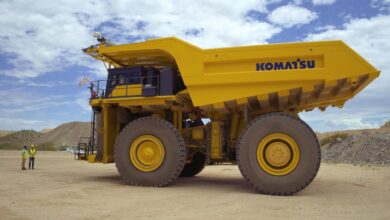Factory Workers Are Designing Climate Solutions From The Ground Up

📝 usncan Note: Factory Workers Are Designing Climate Solutions From The Ground Up
Disclaimer: This content has been prepared based on currently trending topics to increase your awareness.
Fadime Öztürk on the factory floor with team members
Contributed
As the planet warms, garment workers who are already underpaid and overextended, are among the first to feel the consequences of heat stress. Rising temperatures affect comfort, increase the risk of dehydration, heatstroke, and fatigue, while lowering concentration and productivity. In a sector that already demands speed and endurance, this added physical burden can push workers beyond their limits. However, even small interventions like a fan, shaded rest area, or smart ventilation can make a meaningful difference. Investing in worker comfort is both a moral and strategic obligation. Moreover, with energy costs often cited as a barrier, renewable energy offers a path forward as solar, in particular, has the potential to reduce long-term electricity costs for factories while providing reliable power for cooling systems. If integrated thoughtfully, clean energy can fuel not just production, but can help to shield the people who keep global fashion running.
As the fashion industry reckons with rising global temperatures, the spotlight often lands on carbon targets, circularity pledges, and net-zero roadmaps. However, behind the metrics, in the suffocating heat of garment factories, workers and small-scale leaders are quietly crafting their own climate responses, with little fanfare and even less support from the brands they serve. In Turkey and China, factory floors have become the real laboratories for climate adaptation. The solutions emerging are not speculative. They are already being implemented and are grounded in lived experience, shaped by necessity, and often financed from personal sacrifice.
Human-Centered Leadership in Denizli, Turkey
In the industrial town of Denizli, Fadime Öztürk is leading a quiet revolution. As CEO of Öztürk Konfeksiyon, a women-led cut-and-sew subcontractor employing 40 workers — she has chosen to center people over profit, even when market dynamics push the opposite. Fadime installed air conditioning throughout her plant to shield workers from escalating heat as her core belief is that as humans, we are equally important, and fundamentally redefines her responsibility with compassion.
Scaling Innovation at Erak Giyim
Elsewhere in Turkey, Erak Giyim, one of the country’s largest denim manufacturers is investing in technical solutions to combat heat stress without raising emissions.
After employee complaints about operating temperatures reaching 36–37°C, the company implemented evaporative cooling systems that brought peak indoor temperatures down to 25–26°C. These systems emit 97.2% less CO₂ and consume 76% less energy than conventional air conditioning a powerful demonstration of climate-smart adaptation.
Erak also replaced old washing machines with new-generation models that reduced water use from 10 liters to 3 liters per kilogram of fabric. A reverse osmosis system installed in 2022 now recycles wastewater and achieves an 85% water savings annually. Smart humidity sensors in dryers shut off machines automatically once optimal moisture is reached, lowering ambient heat and improving efficiency. All of these upgrades were self-financed as the company acted because worker wellbeing and long-term resilience made business sense.
Collective Care Under Constraints in Guangdong, China
In southern China, Bloomwear Apparel is navigating heat risk under tight structural and financial constraints. With over 100 workers across two floors, the factory handles everything from cutting to packaging. When the garment finishing department relocated to a rented floor that could not accommodate full air conditioning, management turned to alternative methods. They installed large industrial ventilation systems near heat-intensive areas like ironing stations, added ceiling fans, and supported individual workers in setting up portable fans at their workstations. These activities encouraged a sense of shared ownership among workers, who often go the extra mile to keep production on track.
What these factories in Turkey and China make clear is that the future of climate adaptation in fashion is already unfolding, not just in corporate pledges, but in the decisions made on the factory floor. These leaders are proving that people-first strategies work and as global temperatures continue to climb, the industry must not overlook the human infrastructure behind its supply chains. Protecting workers from heat stress is not an operational detail. It is the foundation of sustainable fashion and the test of whether the industry’s climate response truly includes everyone.




